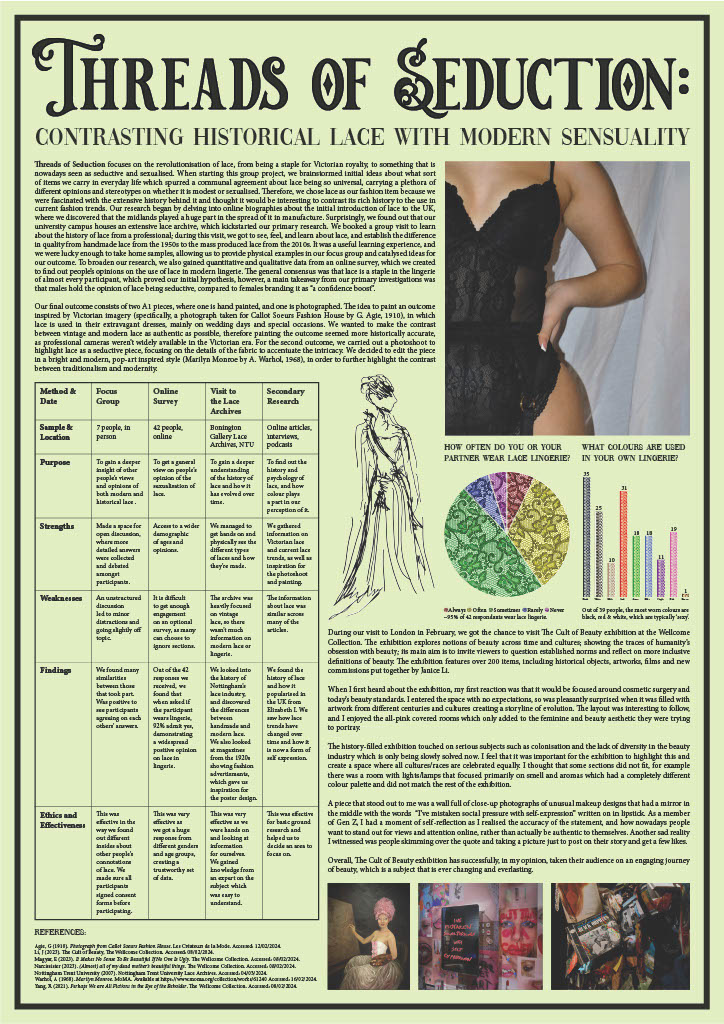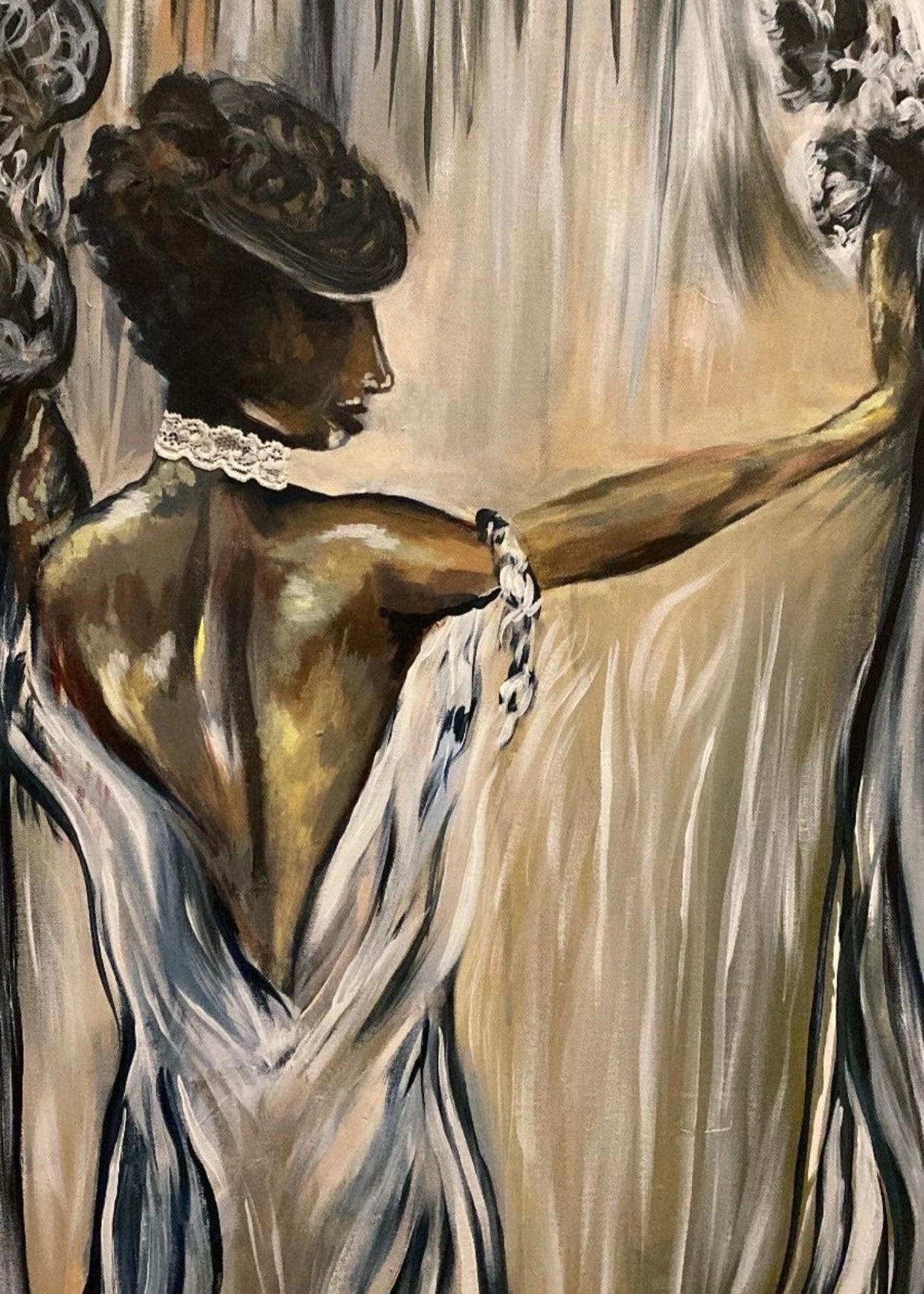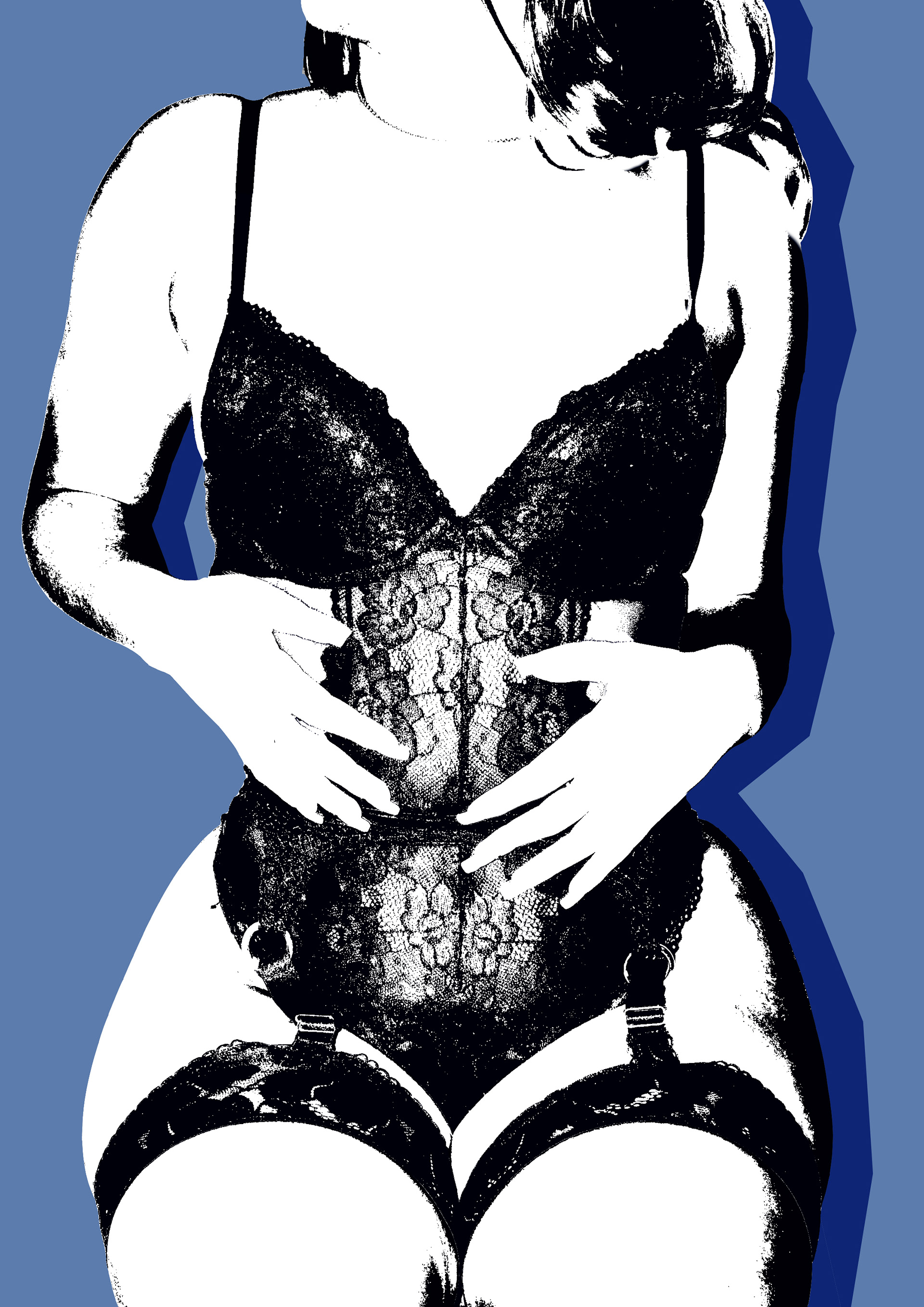THREADS OF SEDUCTION
Contrasting Historical Lace with Modern Sensuality.
The Fashion Anthropology module was a collaboration with fellow FCP students to combine applied research methodologies and critical thinking, integrating our knowledge of societal, cultural, and commercial aspects of the fashion industry.
Threads of Seduction delves into the intricate connection between the timeless elegance of historical lace and the provocative allure of modern interpretations. Through our work, we explored how lace, a fabric steeped in tradition and craftsmanship, has evolved to embody new dimensions of sensuality and desire.
As we compared these historical elements with the bold and daring designs of modern lace, we uncovered a captivating juxtaposition. The sheer fabrics, provocative cutouts and daring silhouettes of contemporary lace lingerie speak to a new era of sensuality - one that celebrates empowerment, self-expression, and unabashed confidence.
This project enhanced our ability to discuss and debate ideas, working as a team to carry out relevant research and develop it to create high-quality outcomes.


Our research began by discovering that the Midlands played a huge part in the spread of manufactured lace, so a key element of our primary research was visiting NTU's Lace Archive, where we were taught about the history of lace from a professional. During this visit, we got to see, feel, and learn about lace, and establish the difference in quality from handmade lace from the 1950s to the mass produced lace from the 2010s.
We gained data from an online survey, created to find out people’s opinions on the use of lace in modern lingerie. Lace was a staple in lingerie of almost every participant, however a main takeaway from our investigation was that males hold the opinion of lace being seductive, compared to females branding it as “a confidence boost”.
We also got the chance to visit The Cult of Beauty exhibition at the Wellcome Collection in London, which explored notions of beauty across time and cultures. Showing humanity’s obsession with physical appearance, its main aim was to invite viewers to question established norms and reflect on more inclusive definitions of beauty. The exhibition features over 200 items, including historical objects, artworks, films and new commissions put together by Janice Li.


Our final outcome consists of two A1 pieces - one is hand painted, and one is photographed.
We wanted to make the contrast between vintage and modern lace as authentic as possible, therefore creating a painting for the first outcome was more historically accurate. It was inspired by Victorian imagery (specifically, a photograph taken for Callot Soeurs Fashion House by G. Agie, 1910), in which lace was used in their extravagant dresses, mainly on wedding days and special occasions.
For the second outcome, we carried out a photoshoot to highlight lace as a seductive piece, focusing on the details of the fabric to accentuate the intricacy. We decided to edit the piece in a bright and modern, pop-art inspired style (Marilyn Monroe by A. Warhol, 1968), in order to further highlight the contrast between traditionalism and modernity.
(Painting by Gracie Jones, photograph by Esme Brigden)
To understand the evolution of lace from modesty to sexualisation, it was important draw inspiration from the rich tapestry of lace's history. We weaved together threads of the past with the bold expressions of the present, to examine the delicate patterns, intricate motifs, and refined craftsmanship of historical lace, honouring its legacy as a symbol of sophistication and femininity.
Through our artistic exploration, we invited viewers to contemplate the constant shifting perceptions of beauty, desire, and intimacy across different times and cultures. By contrasting the elegance of the Victorian era with the boldness of today, we aimed to evoke a deeper appreciation for the allure of lace and its timeless ability to captivate and seduce.
(Outcomes created in collaboration with NTU students Caroline Irving, Gracie Jones and Manon Carminati)